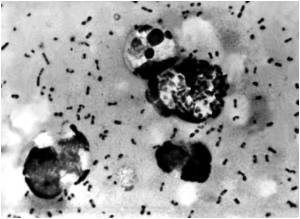The step-by-step process in which organisms evolve new functions has been documented by Michigan State University researchers.

"It's pretty nifty to see a new biological function evolve," said Zachary Blount, postdoctoral researcher in MSU's BEACON Center for the Study of Evolution in Action.
"The first citrate-eaters were just barely able to grow on the citrate, but they got much better over time. We wanted to understand the changes that allowed the bacteria to evolve this new ability. We were lucky to have a system that allowed us to do so," the researcher noted.
Normal E. coli can't digest citrate when oxygen is present. In fact, it's a distinct hallmark of E. coli. They can't eat citrate because E. coli doesn't express the right protein to absorb citrate molecules.
To decipher the responsible mutations, Blount worked with Richard Lenski, MSU Hannah Distinguished Professor of Microbiology and Molecular Genetics.
Lenski's long-term experiment, cultivating cultures of fast-growing E. coli, was launched in 1988 and has allowed him and his teammates to study more than more than 56,000 generations of bacterial evolution.
Advertisement
"We first saw the citrate-using bacteria around 33,000 generations. But Zack was able to show that some of the important mutations had already occurred before then by replaying evolution from different intermediate stages. He showed you could re-evolve the citrate-eaters, but only after some of the other pieces of the puzzle were in place," Lenski explained.
Advertisement
The first stage was potentiation, when the E. coli accumulated at least two mutations that set the stage for later events. The second step, actualization, is when the bacteria first began eating citrate, but only just barely nibbling at it. The final stage, refinement, involved mutations that greatly improved the initially weak function. This allowed the citrate eaters to wolf down their new food source and to become dominant in the population.
"We were particularly excited about the actualization stage. The actual mutation involved is quite complex. It re-arranged part of the bacteria's DNA, making a new regulatory module that had not existed before. This new module causes the production of a protein that allows the bacteria to bring citrate into the cell when oxygen is present. That is a new trick for E. coli," Blount said.
The change was far from normal, Lenski said.
"It wasn't a typical mutation at all, where just one base-pair, one letter, in the genome is changed," he said.
"Instead, part of the genome was copied so that two chunks of DNA were stitched together in a new way. One chunk encoded a protein to get citrate into the cell, and the other chunk caused that protein to be expressed," he added.
The results are published in the current issue of Nature.
Source-ANI









